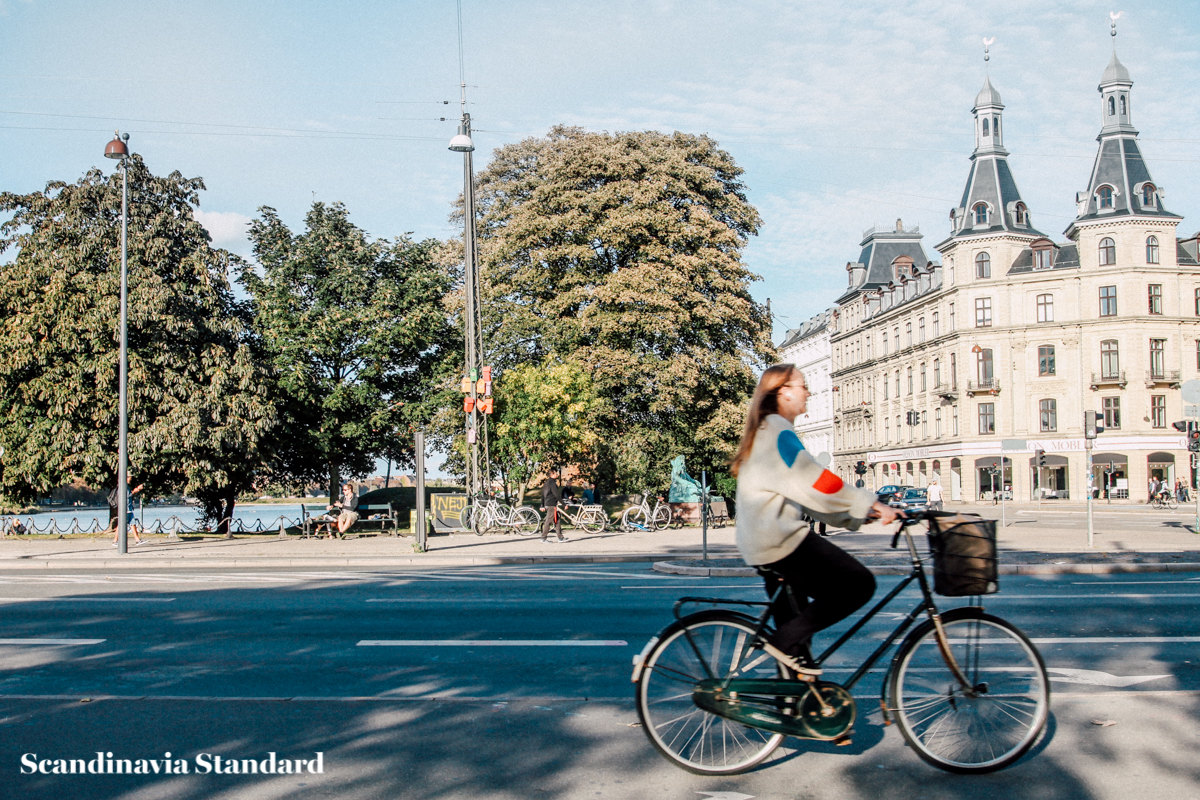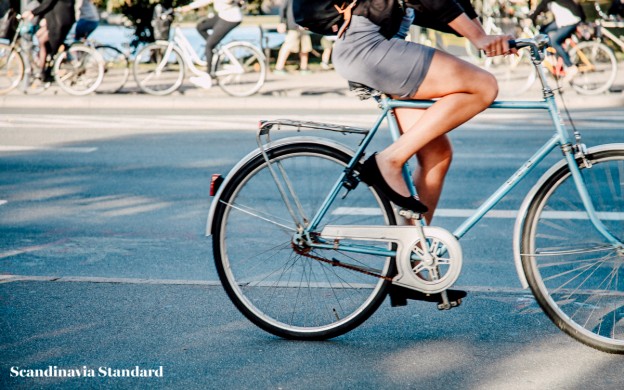“But don’t you arrive to work all sweaty?” non-cyclists ask when I reveal that I cycle to and from work every day. “Only if I was sweaty to begin with,” I semi-joke. It is true that an occasional winter cold or strong head-wind can make getting from my apartment to the office an unpleasant experience but this is why I wear deodorant. A little sweat never hurt anyone.
If you live outside of a cycle-friendly city, it’s easy to assume that there’s more to integrating cycling into your life than just getting on a bicycle. But actually…that is it. You don’t need to change what you wear in any significant way, other than to accommodate for the weather.
Misconceptions about cycle-wear disproportionately speak to womenswear (I’m shocked, she deadpanned) but even the most professionally or formally-dressed among us will find that it’s possible to wear whatever you like on your bike. After all, the bicycle is an invention that has historically had a huge effect on women’s liberation – let’s not curb that narrative just because some of us like wearing stiletto heels and pencil skirts.
Here are a few common myths about cycling clothing and why they’re wrong:
You Can’t Wear Heels
This is my least favorite cycle-related myth because it’s so obviously wrong. Think about it logically: the bigger the heel of the shoe, the easier it is to control the pedal. It is significantly easier to cycle in heels than it is to walk in them.
You Can’t Wear Tight Skirts or Dresses
Hike that skirt or dress up. You’re good to go. Full-coverage underwear is recommended in these cases.


You Can’t Wear Long, Flowing Skirts or Dresses
This is a valid concern, because getting something caught in your spokes or having an obstruction fly up into your face is dangerous. If the skirt or dress is long enough, you can twist it up into a little knot and then tuck it between yourself and the seat. If it’s not quite long enough to knot, or you think it might wrinkle, either bunch it up and wedge under your bum or tie it with an elastic. Other people opt for holding it on the handlebar.
You Can’t Wear Your Hair Up
Well, this is kind of true, if you wear a helmet. We do strongly recommend wearing a helmet if you don’t live in city with cycle-lanes, but if you’re in Scandinavia then most of you (approximately 75%) won’t be wearing a helmet. If you do want to wear a helmet but don’t want it to mess with your hair and are willing to make the investment, try the Hövding (“airbags for cyclists”) that sits around your neck and acts as an inflatable helmet in case of impact. Otherwise, just wear your hair down and keep a travel brush in your bag!


Cars Won’t Notice You If You’re Not in Cycle Gear
The anxiety of wanting cars to be very aware of you while cycling is completely understandable. But spandex isn’t the only way for cars to see you, and honestly, doesn’t guarantee that they will in the first place. The most important thing is to have lights on your bike; preferably magnetic ones so that they’re always flashing, rather than only working at night. If this is truly a worry for you, you can also buy reflective strips to add to your outerwear, a brightly colored coat or bag. Be sure to have a bell or horn as well, and always use hand signals.
You’ll Arrive at Your Destination All Gross
You might! But practice makes perfect, guys. The more you cycle, the easier it will be. Don’t get discouraged if you’re huffing and puffing on your first few rides.
Think the cycle uniform is alive and thriving? Hate wearing heels when you cycle? Tell us about it in the comments!

